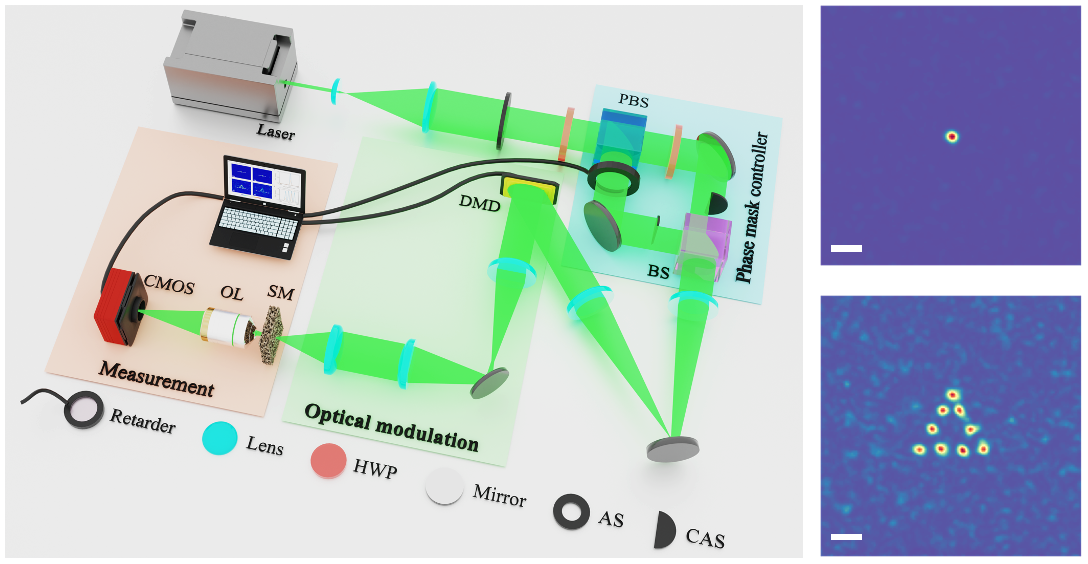- Home
- About Us
- Students
- Academics
-
Faculty
- Electrical Engineering
- Automation
- Computer Science & Engineering
- Electronic Engineering
- Instrument Science and Engineering
- Micro-Nano Electronics
- School of Software
- Academy of Information Technology and Electrical Engineering
- School of Cyber Security
- Electrical and Electronic Experimental Teaching Center
- Center for Advanced Electronic Materials and Devices
- Cooperative Medianet Innovation Center
- Alumni
-
Positions
-
Forum
News
- · Bin Dai's Team Unveils the Assembly Mechanism of β-Lactoglobulin Fibrils, Providing New Insights for the Development of Functional Nanomaterials
- · Mingyi Chen’s research group has made important progress in the field of analog-to-digital converter chips for brain-computer interface
- · Progress in the Development of Semiconductor Nanomaterials to Activate Pyroptosis for Cancer Therapy
- · Jiamiao Yang’s team achieved the high precision optoelectronic reservoir computing based on complex-value encoding
- · Significant Advancements in Resonator-Enhanced Quantum Sensing Achieved by Zenguihua's Team at the School of Sensing Science and Engineering
Jiamiao Yang’s team published important innovation on high-precision transmission matrix measurement of strongly scattering medium
Recently, Jiamiao Yang’s team from the School of Electronic Information and Electrical Engineering at Shanghai Jiao Tong University achieved a significant advancement in the field of high-precision transmission matrix measurement of strongly scattering medium. This research was published entitled “Complex transmission matrix retrieval for highly scattering medium via regional phase differentiation” in Photonics Research.

Background:
Accurate measurement of the complex transmission matrix in scattering medium is essential for applications including anti-scattering optical imaging, phototherapy, and optical neural networks. Non-interferometric methods, which use phase retrieval algorithms to estimate the matrix from speckle patterns created by scattering medium, provide superior noise resistance compared to interferometric approaches. This methodology has become a key research focus in the field of scattering imaging. Conventional non-interferometric methods often rely on liquid crystal spatial light modulators as optical field modulators. These modulators have low refresh rates, which prolong the measurement process of the transmission matrix and restrict their use in dynamic scattering environments. Employing amplitude-type optical field modulators with high refresh rates can drastically decrease the time required to measure the transmission matrix. However, the absence of prior phase knowledge can lead phase retrieval algorithms to converge on local optima, limiting the accuracy of the transmission matrix measurements in scattering medium.
Innovative results:
In response to this challenge, Jiamiao Yang’s team from Shanghai Jiao Tong University has has developed an innovative high-precision method to measure the transmission matrix of scattering medium, utilizing regional phase differentiation. This technique employs a sequence of regional phase masks with varied phase offsets to induce specific alterations in the speckle pattern distribution. These alterations provide predefined phase constraints that enhance the efficacy of the phase retrieval algorithm. By dynamically equalizing the variations among scattered light fields under different phase mask conditions, this method effectively steers the phase retrieval algorithm towards convergence with the true values of the transmission matrix. This strategy successfully resolves the issues of non-global convergence encountered in non-interferometric transmission matrix measurement techniques that use amplitude-type optical field modulators, thus ensuring highly accurate transmission matrix measurements.

Schematic of the high-precision transmission matrix measurement method for scattering medium based on regional phase differentiation.
This approach has markedly enhanced the precision in measuring the transmission matrix of scattering medium. The research team utilized the Gerchberg-Saxton algorithm for phase retrieval and, through numerical simulations, showed that this method significantly enhances measurement accuracy in both amplitude and phase dimensions—achieving improvements by more than three orders of magnitude over the conventional method with an equivalent number of detections. Furthermore, the researchers developed an experimental setup to measure the transmission matrix of a stack of ground glass with dimensions of 16384×1024. Utilizing this measured transmission matrix to predict speckle distributions resulted in a correlation coefficient of 0.84, a substantial increase compared to the 0.27 achieved using the conventional method.

Experimental setup and result of anti-scattering focusing.
Upon successfully measuring the transmission matrix of scattering medium, the research team achieved high-contrast focusing through these medium and transmitted images with a low bit-error rate. In their anti-scattering focusing experiment, they managed to accomplish both single-point and multi-point focusing, reaching peak-to-background ratios of 123 and 16, respectively. These figures represent enhancements of 3.5 and 3.6 times, respectively, when compared to conventional method. During the anti-scattering image transmission experiment, the team effectively reconstructed images of numerals, a smiley face, the letters “SJTU,” and random binary patterns, achieving a remarkably low bit-error rate of only 0.4%, which is a reduction by a factor of 24 relative to conventional method.

Experimental result of anti-scattering image transmission.
About the paper
Associate Professor Jiamiao Yang from the School of Electronic Information and Electrical Engineering at Shanghai Jiao Tong University is the corresponding author. Dr. Qiaozhi He from the Institute of Marine Equipment at Shanghai Jiao Tong University is the first author. This research received support from the National Natural Science Foundation and other funding.
Jiamiao Yang’s team has been actively engaged in optical detection/imaging, optical field modulation, optical computing, as well as the technological development of intelligent optoelectronic instrument design, manufacturing, and integration. A.P. Jiamiao Yang, as the first author and corresponding author, has published over 30 papers in reputable academic journals such as Nature Communications, Science Advances (2 papers), Light: Science & Applications, Optica and Laser & Photonics Reviews. These contributions have garnered attention and recognition from various sources, including CCTV News Broadcast, AIP Scilight, and Phys.org.
Paper Link:
https://doi.org/10.1364/PRJ.513519
Team website:
-
Students
-
Faculty/Staff
-
Alumni
-
Vistors
-
Quick Links
